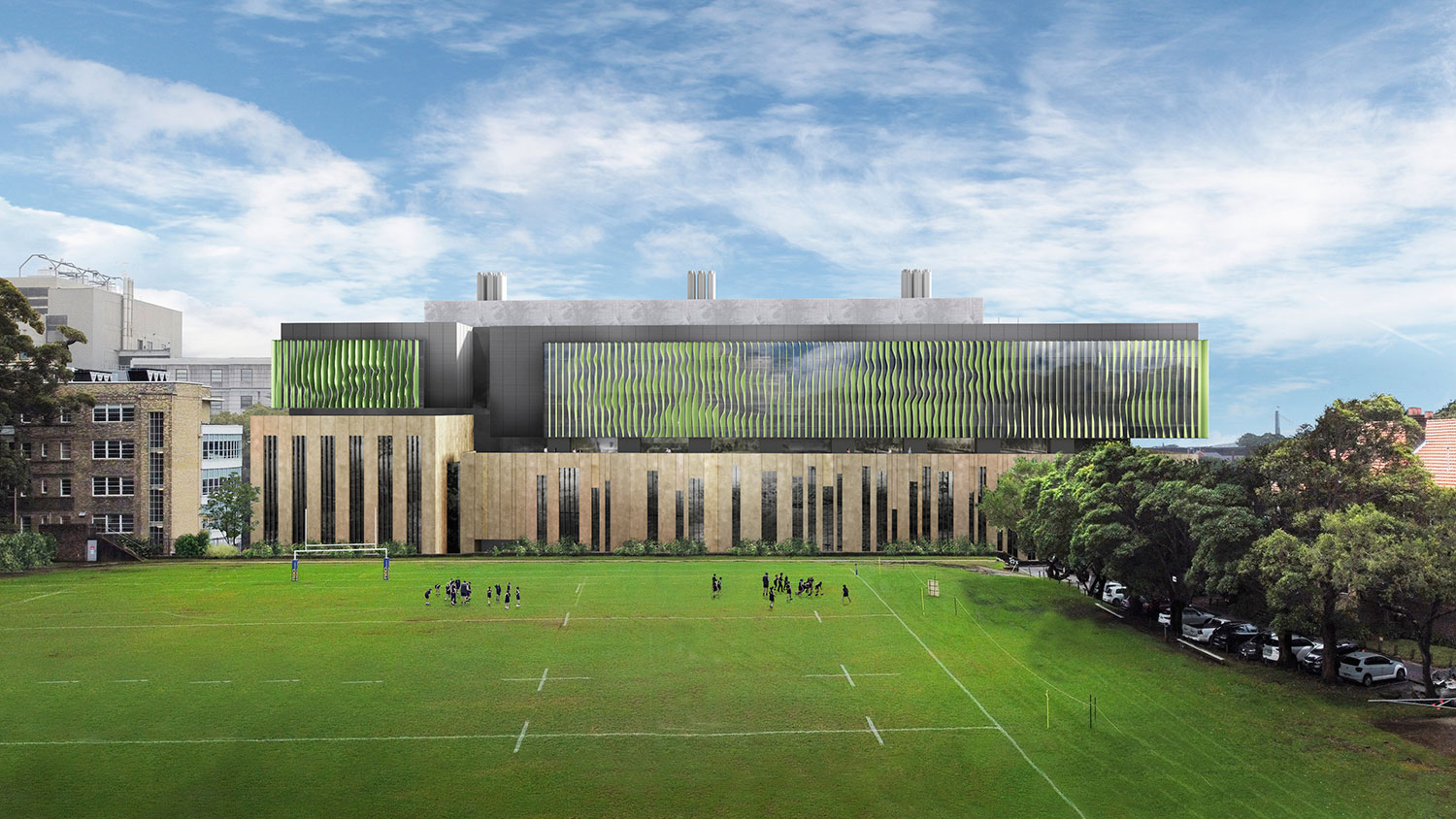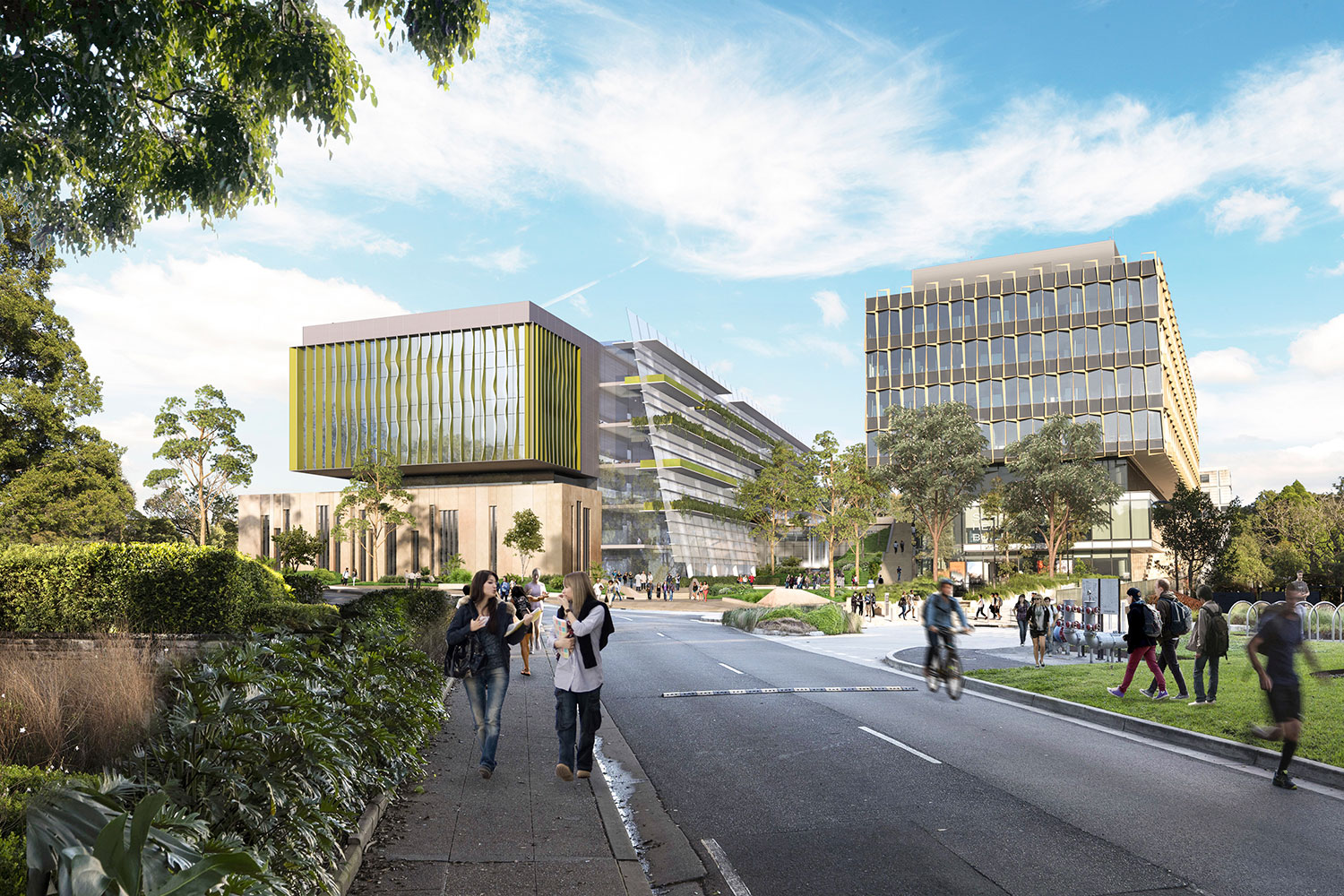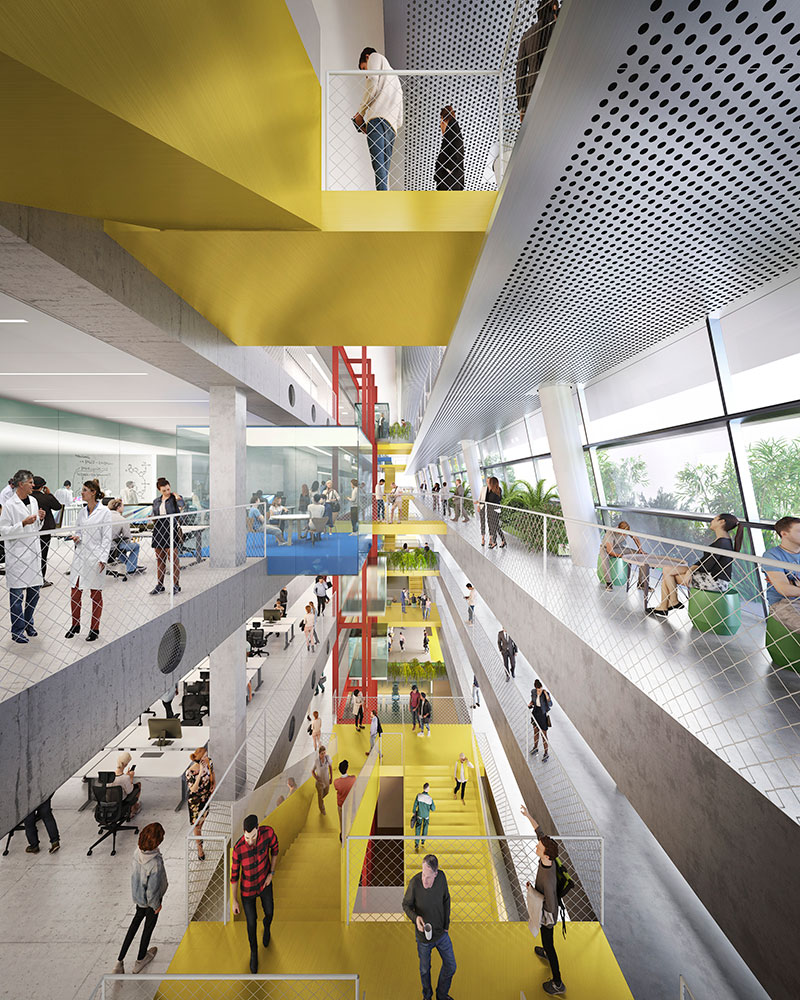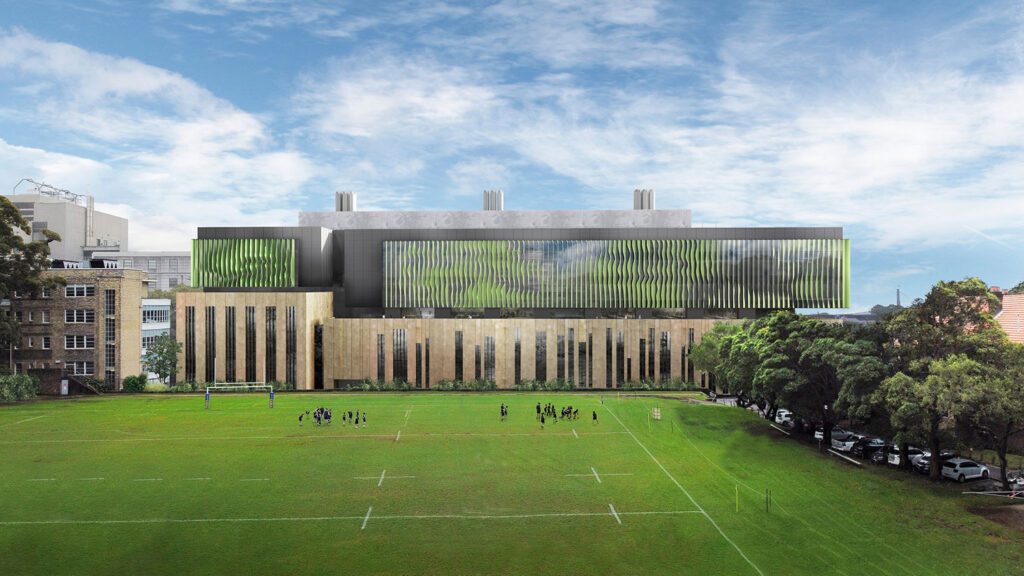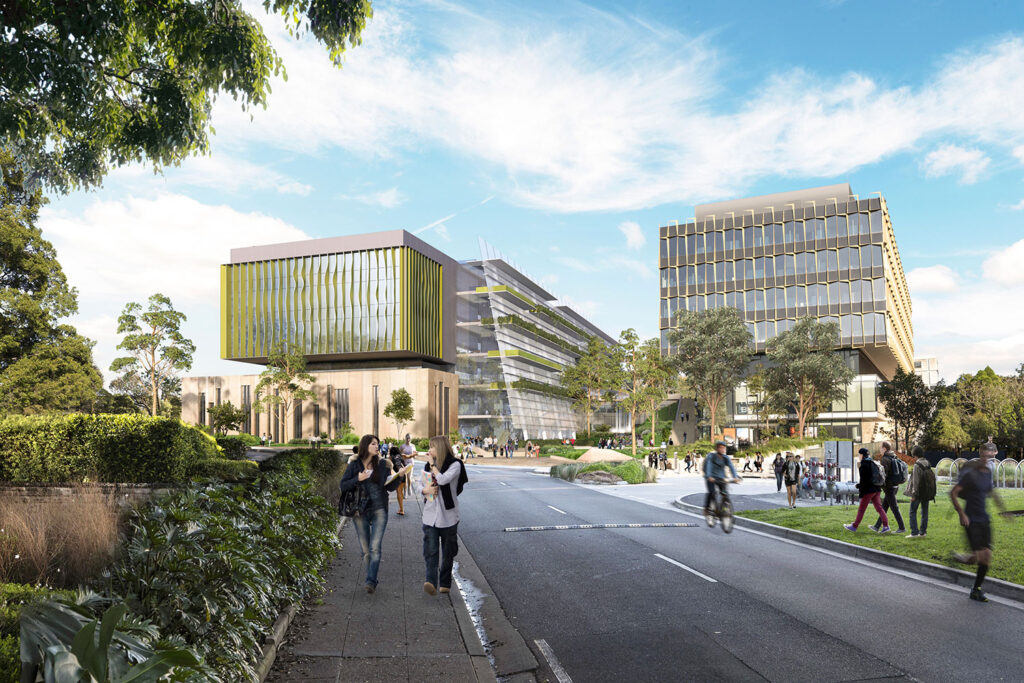Design unveiled for $478m Sydney biomedical precinct
In June 2022, Denton Corker Marshall + HDR won the design competition for the Sydney Biomedical Accelerator, an integrated health, education and research precinct for the University of Sydney and the Royal Prince Alfred Hospital.
The Sydney Biomedical Accelerator will bring together seven science schools under one roof, in a facility designed to tackle some of the world’s most complex health challenges, from cancer to neurodegenerative diseases.
To be built next to the Royal Prince Alfred Hospital on the western boundary of the university’s Camperdown campus, the facility will consist of a 36,000-square-metre precinct including laboratory research facilities and clinical learning spaces.
The design, created in collaboration with Arcadia Landscape Architecture and Aileen Sage, centres around the notions of connectivity and functionality.
“We designed the building as a clear, simple sculptural form with a solid base acknowledging its campus setting. Above the base, sculptural sunscreens are embedded with an abstracted indigenous narrative and also allude to the scientific investigation within.” Denton Corker Marshall’s Director Adrian FitzGerald said.
“Our design achieves the highest level of efficiency and declares its purpose for systematic, methodical scientific study. It is a building for the future with clarity and memorability combining to produce timeless campus architecture.”
The Competition Jury said, “The scheme delivered a world-class biomedical precinct that celebrated the relationship between the University and the Royal Prince Alfred Hospital campuses, linking the two together for the first time in history.”
The jury also commended the seven-storey circulation pine called the Connector as a ‘compelling proposition’ that will integrate the two facilities and foster collaborative interaction.
HDR designed the laboratory research facilities. “By pairing our local and global scientific expertise, we have a unique opportunity to design and deliver a series of state-of-the-art, highly adaptable biomedical laboratories where education, healthcare, engineering, and science converge,” said HDR director Graeme Spencer.
The project is the result of a partnership between the NSW government, Sydney Local Health District, and the University of Sydney. The architectural design is intended to reflect this arrangement, enabling “seamless knowledge transfer and communication between the hospital and University,” the partnership said.
More than 1,200 biomedical researchers and clinicians are anticipated to work from the adjoining buildings, including 800 university laboratory researchers and PhD students.
The $478 million project is funded in part with $73 million in philanthropic donations, including a $20 million donation from the Susan and Isaac Wakil Foundation.
The facility is expected to open in 2026.
